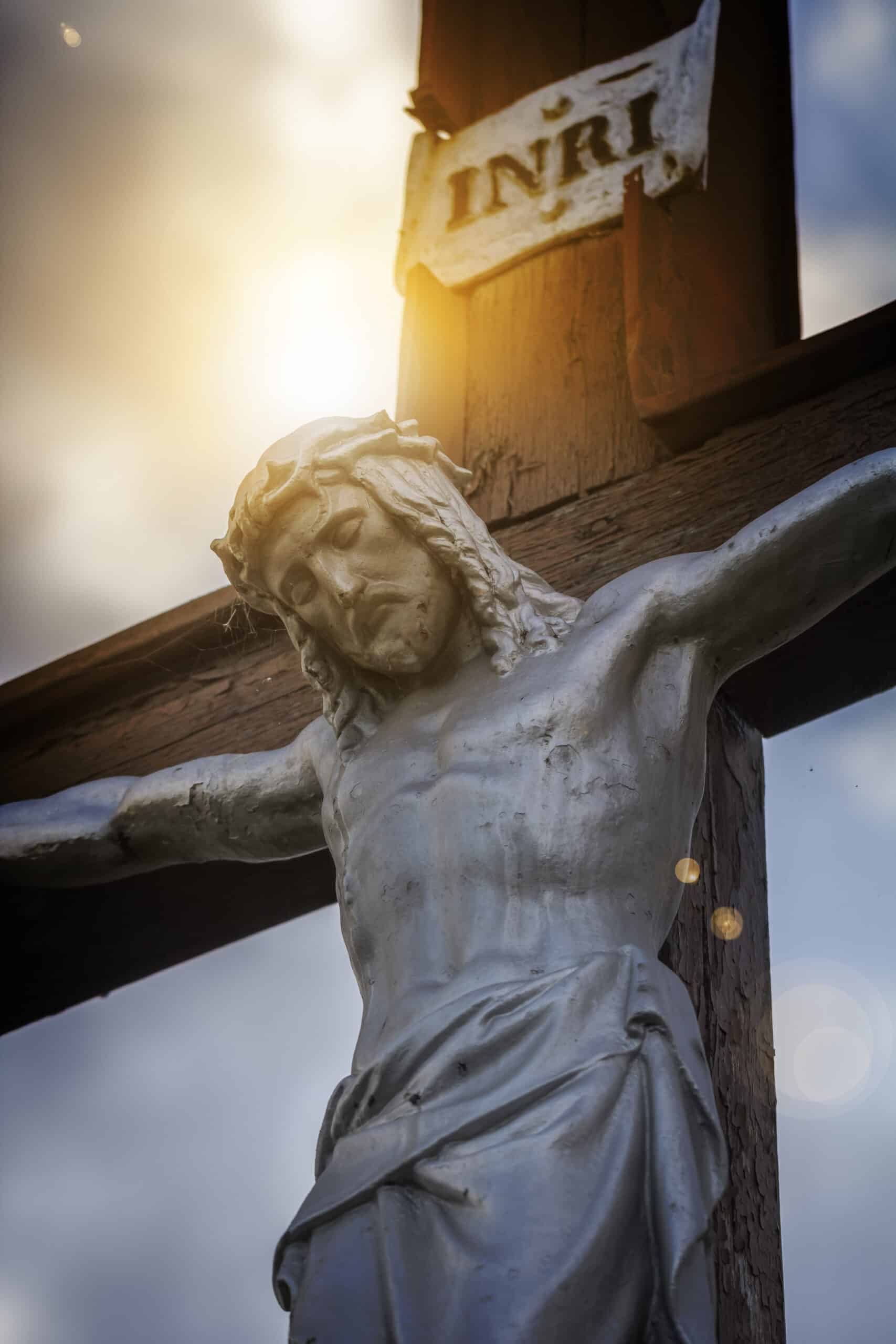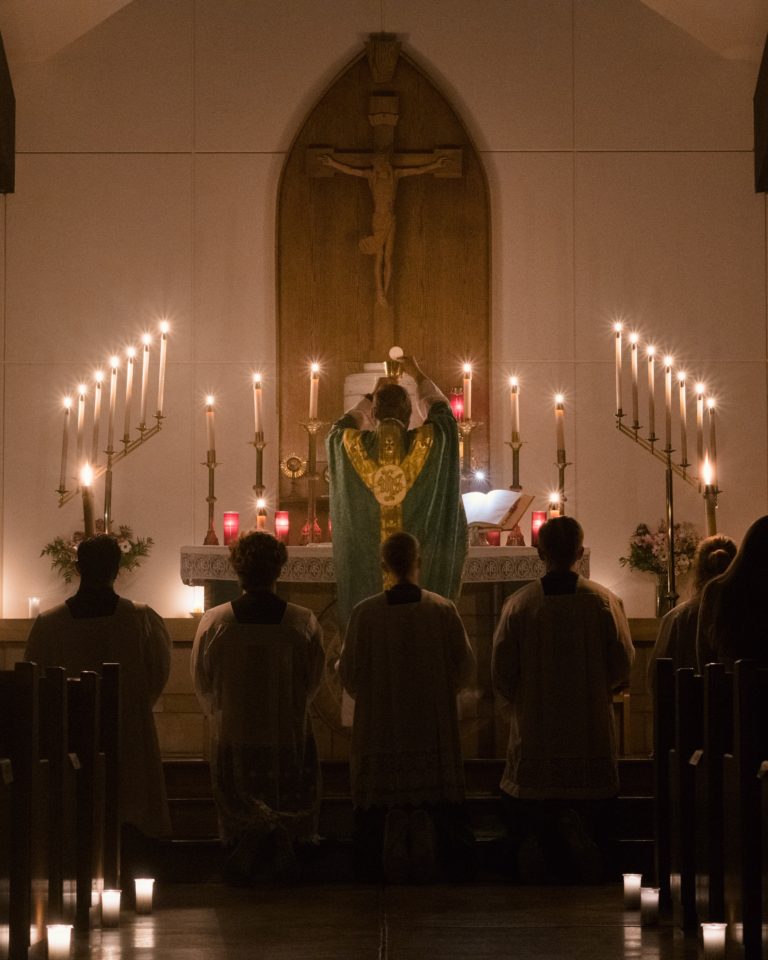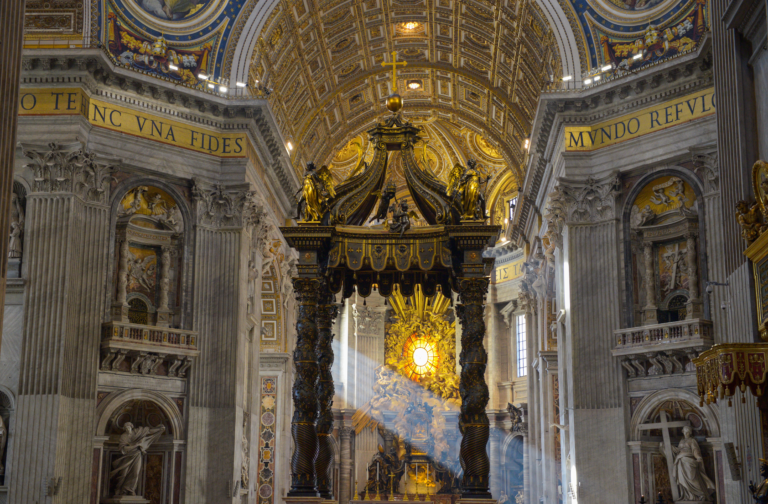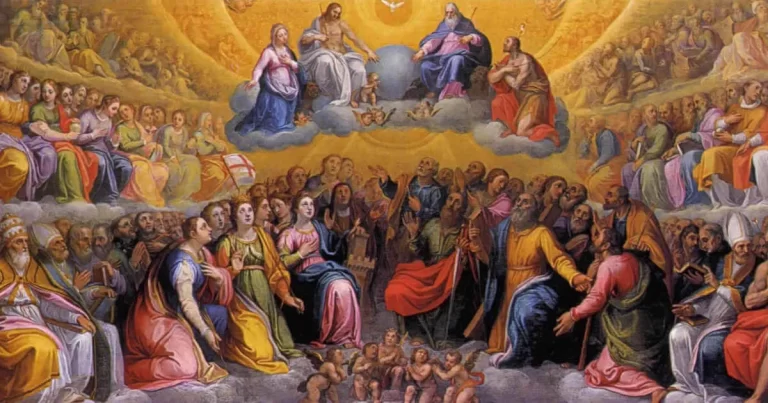Ancient Origins: Why Orthodox and Catholic Signs of the Cross Differ?
The Sign of the Cross stands as one of Christianity’s most fundamental gestures, yet I find it remarkable how this simple motion reveals a fascinating historical divergence between Catholic and Orthodox traditions. Approximately 80 percent of Anglican, Lutheran, Orthodox, and Roman Catholic Christians share this sacred ritual, though they perform it quite differently. This holy practice dates back to at least the late second century, with many Church scholars believing it was used within living memory of the Apostles themselves.
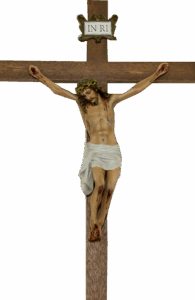
When observing Orthodox Christians making the Sign of the Cross, I notice they move from right to left, while Catholics move from left to right. This directional difference, however, wasn’t always present throughout Church history. Both traditions originally crossed themselves in the same direction. The Catholic Encyclopedia itself confirms that Roman Catholics crossed themselves from right to left until a significant shift occurred during the 15th or 16th century.
What caused the Orthodox Sign of the Cross to differ from the Catholic version we see today?
Despite sharing the same spiritual foundation, these variations reflect profound theological emphases and historical developments within the Church. The differences extend beyond mere direction—they include finger positioning and rich symbolic interpretations developed over centuries.
In this article, I shall explore why Orthodox Christians cross themselves right to left and how these ancient traditions evolved into their current forms, revealing the depth of meaning behind this sacred gesture.
What are the shared meaning(s) behind the Sign of the Cross?
Despite visible differences in execution, both Catholic and Orthodox Christians share a profound understanding of what the Sign of the Cross represents. This powerful gesture transcends denominational boundaries, uniting believers through shared theological meaning that extends back to the earliest days of Christianity.
A) Trinitarian Invocation
The Sign of the Cross stands primarily as a confession of faith in the Holy Trinity. When Christians touch their forehead, chest, and shoulders while speaking the sacred words “In the name of the Father, and of the Son, and of the Holy Spirit,” they proclaim belief in the central mystery of Christianity—one God in three persons.
It is important to note the singular “name” rather than “names,” which specifically recalls that God is One in Three Persons. Pope Benedict XVI taught that this invocation reminds us that “the Trinity, in fact, finds residence in us the day of our baptism.”
Each time I make this sacred gesture, I am essentially reciting a mini-creed—affirming my belief in the Father as the origin of all things, the Son who was sent for our redemption, and the Holy Spirit who proceeds from both as their bond of love.
Furthermore, this Trinitarian formula acknowledges that through baptism, we are invited to dwell in this divine communion of endless love.
B) Reminder of Baptism and Salvation
The Sign of the Cross serves as a powerful reminder of our baptism—the moment we were first claimed by Christ. As Pope Francis explains, during baptism “the priest and parents trace the sign of the cross on the child” to express “the imprint of Christ on the one who is going to belong to him.”
Every time we cross ourselves, we renew our baptismal promises and identity. We affirm that in baptism, we:
Were freed from sin and given new life
Died sacramentally with Christ and rose to new life with Him
Rejected Satan, his work, and empty promises
Became members of God’s holy people
Consequently, this simple gesture becomes a profound declaration: “We are new creatures, clothed in Christ, sons and daughters of God.” Through this sign, we continually recall that we have been “brought into the life of God: Father, Son, and Holy Spirit.”
C) A Physical Expression of Faith
Making the Sign of the Cross unites body and spirit in a tangible expression of faith. It is not merely a ritual motion but an embodied prayer that engages our physical being in spiritual worship. As Pope Francis beautifully expresses, “The cross is the badge that shows who we are: our speaking, thinking, looking, and working are all done under the sign of the cross.”
This physical action serves multiple spiritual purposes. First, it marks us visibly as disciples of Jesus Christ. Additionally, it functions as a defense against evil—many Church Fathers taught that demons tremble at the sight of this holy sign.
The gesture itself points directly to the Cross of Jesus—the place of His ultimate sacrifice that conquered sin and death. By tracing this sign on our bodies, we acknowledge that we no longer belong to ourselves but to Christ.
Above all, the Sign of the Cross is a physical reminder of God’s love for humanity and the greatness of human dignity. As theologians note, “When the Christian mindfully blesses himself with faith, the reason to trust God is signified with the body.” This embodied practice helps believers integrate their faith into daily life, whether at morning prayer, before meals, or in moments of difficulty.
Both Catholics and Orthodox Christians traditions cherish this gesture as a powerful symbol of their shared Christian identity and faith in the salvific power of the Cross.
Why the Orthodox Sign of the Cross Is Different?
The Orthodox manner of making the Sign of the Cross represents a living connection to ancient Christian practice. Throughout Orthodox tradition, this gesture serves not merely as a ritual but as a physical theology—embodying crucial doctrines and preserving practices that date back to Christianity’s earliest days. I find this continuity particularly moving, as it connects modern believers directly to the worship of our earliest Christian ancestors.
A) Historical Continuity with Early Church
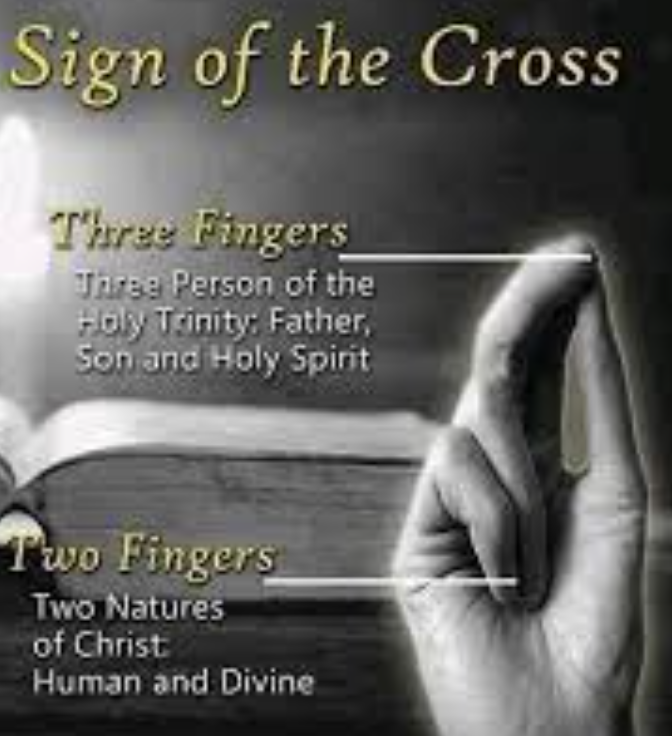
The historical evidence strongly suggests that the Orthodox method of crossing predates the Catholic practice we see today. The first mentions of Christians making the Sign of the Cross appear in the 2nd century, when Tertullian noted that believers would “mark our foreheads with the sign of the cross”. During these earliest days, Christians used only one finger to trace a small cross on their foreheads. By the 4th century, this developed into using two fingers, representing Christ’s dual nature—fully divine and fully human.
This practice developed further, and by the 9th century, Eastern Christians formed the sign with three fingers displayed (symbolizing the Holy Trinity) and two fingers folded (representing Christ’s two natures). The Catholic Encyclopedia itself acknowledges this historical truth—that Roman Catholics originally crossed themselves from right to left, just as Orthodox still do today, until a significant shift occurred in the 15th or 16th century.
B) Symbolism of Right-to-Left Movement
The direction of movement in the Orthodox Sign carries profound theological meaning. Orthodox Christians touch their right shoulder before their left—contrary to the Western practice that emerged later. As we read in the Scriptures, this right-to-left movement isn’t arbitrary but deeply significant.
According to ancient understanding, the right side symbolizes righteousness and blessing. Scripture tells us that Christ will separate the righteous (sheep) on His right from the unrighteous (goats) on His left. Furthermore, when the priest blesses the congregation, he moves from left to right (from his perspective). Therefore, when the faithful make the sign upon themselves, they mirror this blessing by moving from right to left.
Pope Innocent III (1198-1216) himself explained the original practice:
“The sign of the cross is made with three fingers, because the signing is done together with the invocation of the Trinity… from above to below, and from the right to the left, because Christ descended from the heavens to the earth”.
C) Theological Emphasis on Incarnation and Resurrection
The Orthodox Sign of the Cross powerfully expresses core doctrines, particularly regarding Christ’s Incarnation and Resurrection. The movement traces Christ’s salvific journey in a complete bodily sermon:
Beginning at the forehead acknowledges God the Father, Creator of all.
Moving to the chest honors the Son who “descended to earth” and sacrificed Himself for our salvation.
The movement from shoulder to shoulder represents the Holy Spirit’s sanctifying work.
The entire motion traces Christ’s journey—from heaven to earth (head to chest) and His triumphant resurrection and ascension (across the shoulders).
Unlike approaches that emphasize the Cross in isolation, Orthodox theology never separates the Incarnation, Crucifixion, and Resurrection. For Orthodox believers, “the Incarnation is just as significant for our salvation as Christ’s dying on the Cross, as well as his third day resurrection”. This holistic understanding manifests physically each time the sign is made.
The Orthodox manner of crossing thus becomes a complete theological statement—proclaiming the Trinity, Christ’s two natures, His descent from heaven, and His triumphant resurrection—all in one sacred motion that has remained essentially unchanged since the Church’s earliest days.
What are the differences between the Orthodox vs Catholic Sign of the Cross?
When examining Orthodox and Catholic Christians making the Sign of the Cross, the visible differences immediately capture one’s attention. These variations in execution are not merely aesthetic preferences but reflect centuries of theological developments and cultural practices that have shaped these sacred traditions.
1) Finger positioning and what it represents
The Orthodox position their fingers in a precisely symbolic manner that I find particularly meaningful. They join the tips of the thumb, index, and middle fingers to express faith in the Holy Trinity, while pressing the ring and little fingers against the palm to symbolize Christ’s dual nature—fully divine and fully human. This arrangement creates a powerful theological statement in a single hand gesture, proclaiming core doctrines of the faith.
Catholics, however, typically use an open hand with all five fingers extended, symbolizing the five wounds of Christ—the nail marks in His hands and feet, plus the spear wound in His side. This practice developed gradually; the Western Church originally used the three-finger position but eventually adopted the open hand by the end of the Middle Ages.
What other variations exist across Christianity?
Several notable ones include:
- The “small sign” used by Catholics—tracing a cross with the thumb on forehead, lips, and heart before the Gospel reading, representing “God be in my head and in my thinking; God be in my lips and in my speaking; God be in my heart and in my understanding”
The Old Believers’ two-finger sign (index and middle finger) symbolizing Christ’s dual nature
Ethiopian Christians using index and middle fingers while pressing the thumb against the ring finger
2) Direction of movement and its meaning
Perhaps most noticeably, Orthodox Christians move from right to left shoulder, whereas Catholics move from left to right. This directional difference wasn’t always present. Historically, both traditions originally moved from right to left. The shift in Catholic practice began around the 13th century under Pope Innocent III and was solidified by the 15th century.
The original right-to-left movement symbolized Christ’s descent from heaven and passage from Jews (right) to Gentiles (left). Meanwhile, the later Catholic left-to-right motion represents the movement from misery to glory and Christ’s ascension to sit at the Father’s right hand. This shows how even a simple directional change can carry profound theological meaning.
3) Liturgical and cultural variations
Interestingly, the Orthodox sign mirrors the priest’s blessing. When an Orthodox priest faces the people and blesses them, he moves his hand from left to right, while the faithful touch their shoulders from right to left—both moving in the same direction simultaneously. This beautiful symmetry reflects the relationship between clergy and laity in Orthodox worship.
The frequency of making the sign also varies between traditions. In Eastern liturgical celebrations, the Sign of the Cross is used much more frequently than in the Latin Rite. Catholics typically make the sign at specific moments during Mass: the introductory greeting, final blessing, before the Gospel, and optionally during blessings with holy water.
Moreover, cultural variations persist across different communities throughout the world. The Ethiopian tradition adds the phrase “One God” while touching the right shoulder, illustrating how local practices enrich this universal Christian gesture while maintaining its essential meaning.
Why Orthodox and Catholic Signs of the Cross Differ?
How the Sign Changed in the West?
The transformation of the Sign of the Cross in Western Christianity presents a fascinating chapter in Church history. Through the centuries, gradual changes occurred that eventually created the distinct Catholic practice we witness today. To understand this change requires examining both historical influences and theological developments that shaped this sacred gesture.
A) Influence of Pope Innocent III
Pope Innocent III (1198-1216) played a crucial role in documenting how Christians made the Sign of the Cross during the early 13th century. In his writings, he explicitly described the traditional method used throughout Christendom: “The sign of the cross is made with three fingers, because the signing is done together with the invocation of the Trinity… from above to below, and from the right to the left, because Christ descended from the heavens to the earth, and from the Jews (right) He passed to the Gentiles (left).” This description confirms that at this point in history, both Eastern and Western Christians still performed the sign identically, moving from right to left.
B) Shift from Right-to-Left to Left-to-Right
Around the 13th century, a remarkable transition began occurring in the West. Although both traditions originally crossed from right to left as Pope Innocent III described, certain individuals in Rome started reversing the direction. Throughout the next two centuries, this new practice gradually spread across Western Europe. By the 15th century, the left-to-right motion had become standardized in the Roman Catholic Church.
Several explanations for this directional reversal have been proposed:
Western Christians began mirroring their priests, who faced the congregation while blessing
The new direction symbolized “crossing over from misery (left) to glory (right)”
It represented Christ’s passage “from death to life, and from Hades to Paradise”
This shows how theological interpretations developed over time, even for such a fundamental gesture. The Church maintained the essential meaning while the physical expression adapted to emphasize different aspects of our salvation.
C) Open Hand and Five Wounds Symbolism
Alongside the directional change, Western Catholics shifted from using three joined fingers to an open hand with all five fingers extended. This change occurred by the end of the Middle Ages, replacing the three-finger position that had been standard across Christendom for centuries.
The open hand came to symbolize the five wounds Christ suffered during His crucifixion—the nail marks in His sacred hands and feet, plus the spear wound in His side. This symbolism reinforced the Western emphasis on Christ’s suffering and sacrifice for our redemption.
According to Church tradition, certain Catholic regions developed additional variations that further enriched this practice. In Spain, Italy, and Latin America, the faithful often form a small cross with the thumb and index finger, then reverently kiss the thumb after completing the motion—adding another layer of devotional meaning to this ancient practice.
What about the Sign of the Cross Today?
The Sign of the Cross continues to thrive as a sacred gesture across numerous Christian traditions today. This ancient practice, dating back to the earliest days of the Church, now manifests in various forms reflecting theological priorities and historical developments across denominations.
I) Use in Orthodox, Catholic, and Protestant traditions
Within Orthodox worship, the Sign of the Cross remains absolutely central to devotional life. The faithful typically cross themselves nearly a hundred times during a single Divine Liturgy. Orthodox believers maintain the ancient tradition of using three fingers joined together (symbolizing the Holy Trinity) while folding the other two fingers against the palm (representing Christ’s dual nature as fully God and fully man).
Catholic practice generally employs all five fingers extended, representing the five wounds Christ suffered during His crucifixion. This open-hand gesture, along with the left-to-right motion, has become the standard practice throughout the Western Church.
Contrary to what many believe, numerous Protestant denominations have either preserved or revived this venerable gesture. Martin Luther himself explicitly recommended it in his Small Catechism, urging followers to make the Sign “in the morning when you rise” and “at night when you go to bed.” I find it particularly noteworthy that Lutherans, Anglicans, and Methodists incorporate this practice in various liturgical settings, especially during baptisms and communion. The Episcopal Church regularly employs it in worship, and Methodist clergy often trace it on foreheads during Ash Wednesday services.
II) Role in personal prayer and public worship
Beyond formal liturgical celebrations, Christians across traditions employ this sacred gesture throughout daily life. The great St. John Chrysostom advised the faithful,
“Never leave your house without making the sign of the cross. It will be to you a staff, a weapon, an impregnable fortress.”
Catholics commonly make the Sign when entering churches, before meals, and during personal prayers, recognizing it as a powerful sacramental that prepares the soul to receive grace.
Many devout parents bless their children with this Sign before bedtime or journeys, creating moments of spiritual connection within family life. Some believers even make the Sign at everyday moments—when passing a church, hearing sirens, or facing difficult situations—invoking divine protection and acknowledging God’s presence in all circumstances.
Conclusion
Throughout the rich tapestry of Church history, Christians have embraced the Sign of the Cross as a powerful physical expression of faith. After examining both traditions closely, I am struck by how such a simple gesture carries profound theological weight. The Orthodox practice, with its right-to-left movement and precisely positioned fingers, undoubtedly preserves the earliest Christian tradition dating back to the second century. Meanwhile, the Catholic approach developed gradually, shifting direction and finger positioning by the fifteenth century to emphasize different aspects of Christ’s redemptive work.
These differences, though appearing minor to the casual observer, reflect distinct theological emphases that have developed over centuries. Orthodox Christians maintain historical continuity with the early Church and emphasize the holistic nature of salvation through their three-finger position symbolizing the Holy Trinity. Catholics, through their open-hand, left-to-right motion, highlight Christ’s five wounds and the journey from misery to glory, from death to resurrection.
Nevertheless, despite these variations in practice, both traditions share the essential meaning behind this sacred gesture. The Sign ultimately proclaims faith in the Trinity, commemorates our baptism into Christ, and physically expresses devotion to His sacrifice. Its revival among Protestant denominations speaks to a growing appreciation for this ancient practice across Christian traditions.
FAQs
Q1. What is the main difference between Orthodox and Catholic signs of the cross? The primary difference is the direction of movement. Orthodox Christians move from right to left, while Catholics move from left to right. Additionally, Orthodox Christians use three fingers to symbolize the Trinity, while Catholics typically use an open hand.
Q2. Why do Orthodox Christians make the sign of the cross from right to left? Orthodox Christians move from right to left to symbolize Christ’s descent from heaven to earth and His passage from the Jews (right) to the Gentiles (left). This practice is believed to be the original method used by early Christians.
Q3. What does the finger positioning represent in Orthodox and Catholic traditions? In Orthodox tradition, three fingers (thumb, index, and middle) represent the Trinity, while the other two symbolize Christ’s dual nature. Catholics typically use an open hand with five fingers extended, representing Christ’s five wounds.
Q4. How often is the sign of the cross used in different Christian traditions? The frequency varies among traditions. Orthodox Christians use it extensively during worship, often making the sign nearly a hundred times during a single Divine Liturgy. Catholics typically make the sign at specific moments during Mass, such as the introductory greeting and final blessing.
Q5. Is the sign of the cross used in Protestant traditions? Yes, contrary to popular belief, many Protestant denominations use the sign of the cross. Lutherans, Anglicans, and Methodists incorporate it in various ways, especially during baptisms and communion. Some Protestant communities have also revived this practice as part of a growing interest in historic Christian traditions.
